Three questions for Ueli Steck
The fall season in the Himalayas is not over yet. Although the expedition on Mount Everest as well as those on the eight-thousanders Makalu, Dhaulagiri and Annapurna were recently canceled due to dangerous conditions on the mountains, there are still a few climbers under way on the highest mountains. So the team of South Korean Sung Taek Hong, who wants to tackle the Lhotse South Face again, decided in favor of a later expedition start. And also Swiss climber Ueli Steck and American Colin Haley have just completed their acclimatization. They did it on separate ways. Steck climbed along with Tenji Sherpa through the North Face of the 6,640-meter-high Cholatse. “That was pretty cool. He is the first Sherpa who climbed this wall”, Ueli writes to me. “It’s nice to see how a ‘new’ generation of Sherpas is growing up, who are really interested in climbing and not just in business. I think that’s awesome!” Steck and Haley want to first repeat the extremely difficult route via the Southeast Pillar to the summit of the 7,804-meter-high Nuptse East which was opened in in 2003 – but contrary to the first climbers, the Russians Valerij Babanov and Yuri Kosholenko, in Alpine style. I sent Ueli three questions to Base Camp.
![]() read more
read more
First the earthquake, now the blockade
At last! Many Western governments have now canceled their general travel warning for Nepal that they had imposed after the 25 April earthquake. Instead, they are now only warning not to travel to certain regions of the Himalayan state. So the German Foreign Office called the trekking regions Langtang and Manaslu problematic areas, where access “is not possible or only with considerable difficulties”. The British Foreign Office advises against traveling to these regions too and calls in addition the districts Sindhupalchowk and Dolakha. From the perspective of the German Government “particular caution is advised” when traveling in these or other areas that were hit hard by the quake. The US Department of State notes that “the frequency and severity of aftershocks have greatly diminished”, but encourages travelers “to consult carefully with their travel and trekking agencies for current, location-specific information and to heed warnings of potential danger”. All those governments point to a new problem in Nepal – a political one.
![]() read more
read more
Kuriki’s second summit push on Everest failed
The Japanese climber Nobukazu Kuriki has turned around again. The 33-year old abandoned his second summit attempt at 8,150 meters, about 200 meters above the South Col. „Deep snow and high winds“ stopped him, Kuriki tweeted. “I did my best. I’m really disappointed.” Indeed he sounded exhausted and frustrated talking via radio with his team.
![]() read more
read more
Sherpa trio completes first climb trilogy
Anyone who has ever climbed with Sherpas knows: There are many powerful, really good climbers among them, who can make western climbers look quite old. It is no wonder that there have been Sherpas as team members in many first ascents of the world’s highest mountains in the Himalayas and the Karakoram – like Tenzing Norgay on Mount Everest in 1953, Pasang Dawa Lama on Cho Oyu in 1954 or Gyalzen Norbu on Manaslu in 1956. But always along with foreign mountaineers. That has now changed.
![]() read more
read more
The real blind on Everest are the inexperienced
The Nepalese government has triggered a medial avalanche. A week ago, Tourism Minister Kripasur Sherpa mentioned the possibility of stricter rules on granting permits for Mount Everest. The government is considering age limits – from 18 to 75 years – and a reduction of permits for disabled climbers. “The disabled or visually impaired people usually need someone to carry them, which is not an adventure”, Sherpa said. “Only those who can go on their own will be given permission.” The American Erik Weihenmayer, in 2001 the first blind person ever to climb Mount Everest, is outraged. The statement is an overreaction that represents the biases, prejudices and superstition that are very prevalent in Nepal government, Erik writes on Facebook: “It’s a shame that the Minister of Tourism is using the tragedies of the last two years to scapegoat the tiny number of disabled climbers and enact a policy that won’t fix the problem. Frankly, being faced with additional challenges, disability, age, etc. forces a climber to be more prepared and make more cautious decisions.”
![]() read more
read more
Thomas Huber: “In the hands of fate as never before”
It was a hot, but from the climbers’ perspective a meager summer in the Karakoram: Most expeditions left Pakistan without summit successes. The German “Huberbuam” Thomas and Alexander, the Swiss Dani Arnold and the Austrian Mario Walder also returned empty-handed, but alive and “in one piece” – which was not a matter of course considering their experiences at the Latok group. Thomas, aged 48, the elder of the Huber brothers, told me the story.
Thomas, this summer you actually wanted to tackle the North Face of the 7,145-meter-high Latok I which has not yet been climbed. This did not happen. Why?
We have seen the North Face only from afar. We realized pretty soon that is was impossible to climb the wall under these conditions. It would have been possible to tackle the North Ridge. But this did not happen too, because another mountain battered us so that we lost our motivation and courage to push ourselves to the absolute limit again.
![]() read more
read more
Successes in a row on Manaslu
The success stories from the eighth highest mountain on earth are piling up. On Wednesday and Thursday at least 76 climbers reached the 8,156-meter-high summit of Manaslu, said the “Himalayan Times”. The Nepalese operator Seven Summits Treks reported about 50 summit successes of their clients and Sherpas alone. On Friday Dominik Mueller, head of the German expedition operator Amical Alpin, reached the highest point of Manaslu too.
![]() read more
read more
Kuriki: “I’ll enjoy climbing including hardship”
Next try. In these days, Japanese climber Nobukazu Kuriki will start his second summit attempt on Mount Everest. As reported before, his first try had failed last weekend, at about 7,700 meters, the level of the Geneva Spur, 200 meters below the South Col. Kuriki is the only climber who tries to scale Everest this fall, climbing alone without bottled oxygen. I have succeeded in contacting the 33-year-old at Everest Base Camp.
Nobukazu, what went wrong during your first summit attempt?
There was deeper snow than I expected, and it took too long to plow through it.
You decided to pitch your tent for your highest camp at about 7,700 meters instead of the usual South Col. Why?
![]() read more
read more
15 climbers on top of Manaslu
This year’s first summit successes on Manaslu are reported: Chhang Dawa Sherpa, head of the Nepalese operator Seven Summit Treks, said that nine foreign mountaineers and six Climbing Sherpas summited the eighth highest mountain on earth this morning. More teams are on the way up and plan to reach the highest point at 8,156 meters on Thursday or Friday. Dan Mazur from Summit Climb tweeted from Camp 4 at 7,450 meters announcing to climb towards the summit tonight. Rainer Pircher from Amical alpin is in Camp 4 too. Dominik Mueller, head of Amical, and his clients are spending the night at Camp 3 at 6,800 meters and want to climb up to Camp 4 on Thursday.
![]() read more
read more
Stricter rules for Everest permits?
The Nepalese government apparently wants to make sure that Mount Everest is taken seriously again. Speaking at an event in Kathmandu on the occasion of the World Tourism Day on Sunday, Tourism Minister Kripasur Sherpa said that new age limits and other more stringent conditions on granting permits for Everest expeditions were in preparation. It is considered to allow only climbers aged between 18 and 75 to climb the highest mountain on earth.
![]() read more
read more
Kuriki turns around on Everest
It would have been a real bang. And probably the headline was already prepared: “Historical Everest climb with only one complete finger”. But this headline will be put away in a drawer until further notice. Nobukazu Kuriki has abandoned his first summit attempt on Everest. “I tried hard taking all my energy, but it took too much time to move in the deep snow”, the 33-year-old Japanese tweeted. “I realised if I kept going, I wouldn’t be able to come back alive.” It is still unclear how high exactly he climbed. According to his GPS signal messenger, he did not reach the South Col. Kuriki had made his “last Camp”, as he wrote, at about 7,700 meters, at about the level of the Geneva Spur, 200 meters below the South Col. From there, it would have been a real marathon stage up to the 8,850-meter-high summit – in particular because the Japanese was climbing solo above Camp 2, not using bottled oxygen, and the route was neither prepared nor secured with fixed ropes.
![]() read more
read more
40 years ago: Everest Southwest Face first climbed
“Everything was said 40 years ago. Nothing has changed.” Doug Scott was tight-lipped when I asked him last spring about the British Everest Southwest Face Expedition in 1975. Late on 24 September, today exactly 40 years ago, Doug and his team comrade Dougal Haston, had reached the summit of Mount Everest after they had first climbed the more than 2000-meter-high, extremely difficult rock wall. After their summit success Scott and Haston survived a bivouac at 8760 meters. Their first climb of the Southwest Face was a milestone in Himalayan climbing, one of the “last big problems” was solved. Five expeditions had failed before, among them a British one in 1972.
![]() read more
read more
People like Mahesh
It is far from easy to survive in the highly competitive tourism market in Nepal. Under normal circumstances, but all the more after the earthquake last spring. There are hundreds of trekking and expedition agencies in Kathmandu that compete to get any clients. Most of them are small companies, and the owners often live from hand to mouth. Small entrepreneurs like my friend Mahesh Kumar Budha suffer most from the economic consequences of the earthquake. The government estimates that the tourism market has slumped by 50 percent, local operators assume that it is up to 70 percent.
![]() read more
read more
Dominik Mueller: “I feel absolutely safe”
The 8,136-meter-high Manaslu is probably the only mountain in Nepal, where currently almost everything is as usual in fall. “We have about 15 expeditions here, many of them small teams”, Dominik Mueller tells me by satellite phone from the about 4,800-meter-high Manaslu Base Camp in western Nepal. “All in all we have probably 120 to 130 summit aspirants.” Dominik is leading an expedition of his German operator Amical alpin, along with the mountain guide Rainer Pircher. The other members are ten clients, three Climbing Sherpas, a cook and four kitchen helpers. The Base Camp is not too crowded, says Dominik. “We have found a very nice place for our tents.” On Wednesday, the puja will be held, the traditional Buddhist ceremony to get the gods’ blessings for the climbers. Some expeditions – such as the group of Himalayan Experience that is led by the New Zealander Russell Brice – have been on the mountain for a while already.
![]() read more
read more
Avalanche on Dôme de Neige kills seven climbers
Seven climbers have lost their lives in an avalanche in the French Alps today. The incident happened on the 4015-meter-high Dôme de Neige in the Écrins massif southeast of Grenoble. The French authorities said that four Germans and three Czechs died in the avalanche. Another injured female climber from Germany was rescued. It is said that three rope teams were hit by the snow masses. According to the rescuers, the 250-meter-long avalanche was likely triggered when a snow slab separated and hurtled down the slope. Last weekend it had heavily snowed in the region. “The conditions are winter-like at the moment“, a policeman said. At least 39 people have died in snowslides this year in France, according to the National Association for the Study of Snow and Avalanches.



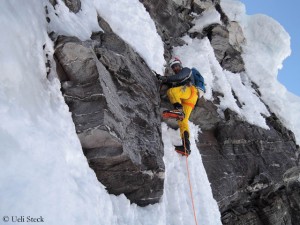

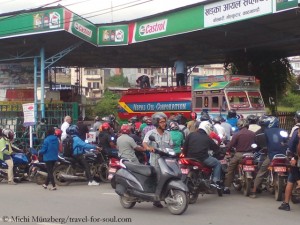
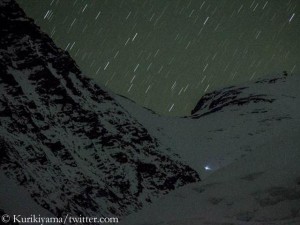
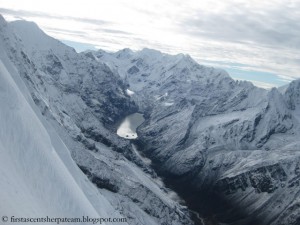
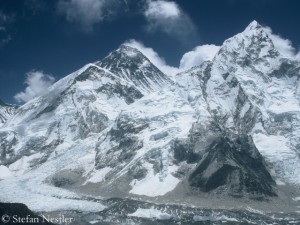
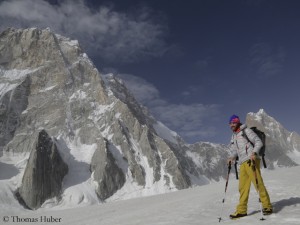
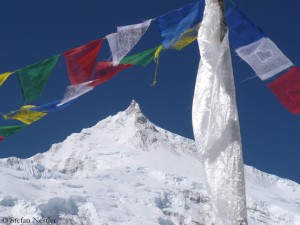
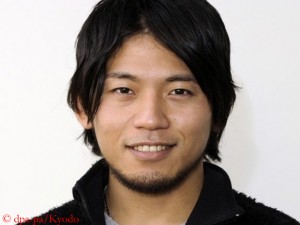
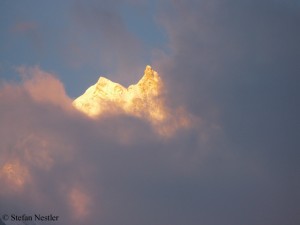
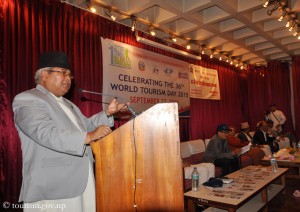
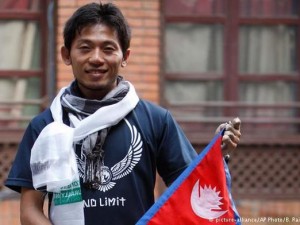
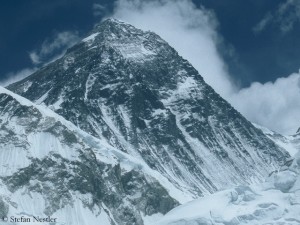
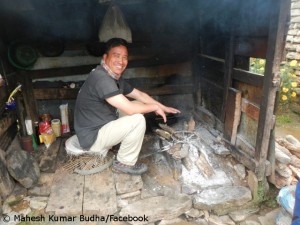
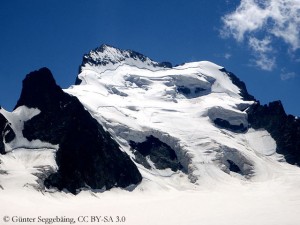





Feedback